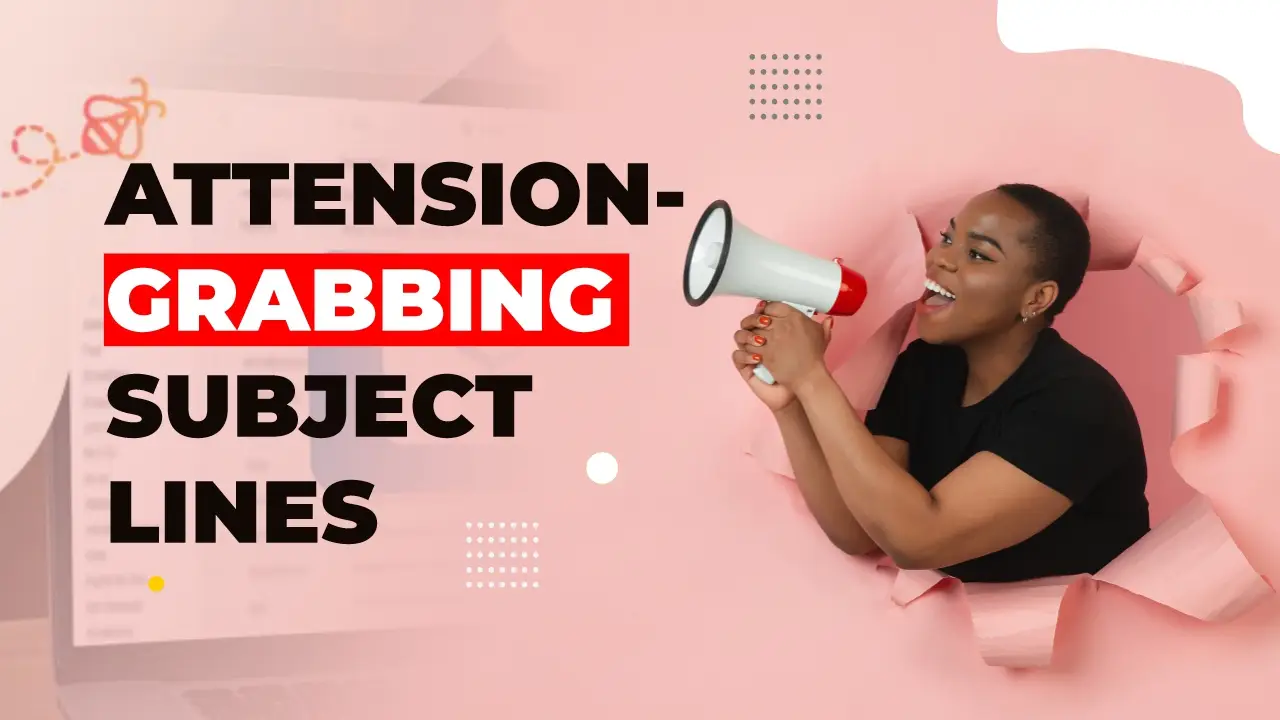How many emails have you ignored today?
Be honest – probably dozens, right?
Now, here’s the real question: why did you open the few you did?
Was it luck, timing, or something else?
It was likely the subject line that made you stop scrolling and pay attention.
Your subject line is the first impression of your email.
You can have the most valuable content or the best offer, but if your subject line doesn’t grab attention, your email might as well be invisible.
Today, I’ll walk you through the techniques we use to write high-performing subject lines that keep our clients’ open rates well above the industry average.
By the end, you’ll have practical tips to write subject lines that make people stop, click, and read your email content.
And stick around!
I’ve included a link at the end where you can download our Subject Line Swipe File – 500 carefully crafted email subject lines, organized by category, to give you endless inspiration.
Watch The Full Video Below
Why Are Subject Lines So Important?
Inboxes are overflowing, and people quickly skim through subject lines to decide which emails to open.
If your subject line doesn’t grab their attention, your email gets lost in the shuffle – or worse, marked as spam.
Following these seven tips will help your subject lines stand out, grab attention, and encourage readers to open your emails.
Tip #1: Spark Curiosity
Curiosity is a powerful motivator.
When you make readers curious about your subject line, you’re giving them a reason to open the email to satisfy that curiosity.
Human beings are naturally curious, and we all want to know what’s happening in the world, with friends, or with a new product.
Use this to your advantage.
Examples of Curiosity-Driven Subject Lines:
- “Vaginas and public school? Here’s what you need to know.”
- “Copywriters – we’re all going to hell.”
Both of these subject lines make you stop, wonder, and want to know what’s inside.
Pro Tip: Make sure your subject line is relevant to your email content.
If you make people curious about your subject line but then deliver unrelated content, your audience may unsubscribe or mark your email as spam.
Curiosity Subject Line Ideas:
- “Read this if you want to avoid heart disease”
- “3 weight loss lies you believe”
- “Here’s why the government doesn’t want you to be healthy”
These lines work well for health or lifestyle emails, as each one makes the reader want to know what’s in the email.
Tip #2: Focus on Benefits, Not Features
People want to know what’s in it for them before they even open an email.
Make your subject line benefit-driven to grab attention by directly addressing what the reader will gain.
Examples of Benefit-Based Subject Lines:
- “Get your emails opened with this easy trick”
- “Boost your income with just one habit change”
By focusing on the benefit instead of the feature, you’re making your email more appealing to readers. Think of the “what’s in it for me?” factor and use that as your hook.
Pro Tip: Avoid focusing on features or characteristics in your subject lines. Instead, concentrate on how your product or content will improve the reader’s life.
Tip #3: Use Numerals Instead of Words
Numbers stand out in a sea of words, making your subject line more noticeable.
Research shows that using numerals instead of spelling out numbers increases open rates.
Example Comparison:
“Three simple exercises to help you lose weight” VS “3 simple exercises to help you lose weight”
Notice how the second option looks more appealing.
Numerals break up the text, drawing the eye and giving readers something specific to expect.
Why It Works:
Numbers provide a sense of structure and make the content feel digestible.
Readers know exactly what to expect, which makes them more likely to open.
Tip #4: Ask a Question
When you ask a question in your subject line, you’re engaging the reader right from the start.
People naturally want to answer questions or see if they know the answer, which makes them more inclined to open the email.
Examples of Question-Based Subject Lines:
- “Are you making these marketing mistakes?”
- “Want to know the secret to faster weight loss?”
Questions tap into the brain’s need for closure. Your readers will feel compelled to open the email to resolve the question.
Pro Tip: Make sure the question is relevant to your audience’s interests. If your audience can relate to the question, they’ll be much more likely to open it.
Tip #5: Reference Recent News or Trends
Referencing current events or trends in your subject line can make your email feel more timely and relevant.
People are more likely to open an email that seems like it’s providing fresh information.
Examples of News-Based Subject Lines:
- “Breaking News: New health findings you need to know”
- “Latest study reveals the shocking truth about sugar”
Pro Tip: Keep the news relevant to your content and audience.
If your email is about health, reference a recent study or health guideline – not something unrelated like the latest tech news.
Tip #6: Avoid All Caps
Using all caps in your subject line can feel like you’re shouting at the reader.
It can also make your email look spammy and unprofessional.
Studies show that 85% of readers prefer lowercase subject lines because they feel more genuine and conversational.
Better Alternative:
Instead of “NEW DISCOUNTS – CLICK NOW!”, try “New discounts just for you!”
By mixing case, your subject line appears more approachable and less aggressive.
Pro Tip: If you want to emphasize a specific word, try using sentence case but capitalize that one keyword.
For example, “Big DISCOUNT on your favorite products.”
Tip #7: Keep Your Subject Lines Short (Under 50 Characters)
When it comes to subject lines, shorter is often better.
Short subject lines stand out and are easier for readers to scan quickly.
Reasons Why Short Subject Lines Work Better:
- They’re Easier to Scan: Busy readers skim through their inbox, and shorter subject lines are quicker to process.
- They Stand Out: With many marketers using long subject lines, short lines are more noticeable.
- They Display Better on Mobile: Long subject lines often get cut off, especially on mobile devices, so short lines ensure the full message gets across.
Examples of Short Subject Lines:
- “Can we chat?”
- “If you lost everything today…”
- “Last chance for 50% off!”
For most emails, aim to keep your subject line under 50 characters to ensure it’s fully visible and impactful, especially for mobile readers.
Bringing It All Together
Creating compelling subject lines is both an art and a science, but by following these seven strategies, you’ll be well on your way to boosting open rates and improving email engagement.
Quick Recap of Our Top Tips:
- Spark Curiosity: Make readers want to know more.
- Focus on Benefits: Show what’s in it for them.
- Use Numerals: Numbers stand out and attract attention.
- Ask a Question: Engage your reader with a question.
- Reference Current News: Make your emails timely and relevant.
- Avoid All Caps: Keep it friendly and professional.
- Keep It Short: Aim for 50 characters or less.
Bonus: Get Inspired with Our Subject Line Swipe File
Need more ideas?
Download our Subject Line Swipe File with 500 proven subject lines organized by category.
These subject lines follow the exact principles outlined in this post, making them the perfect inspiration for crafting your own attention-grabbing subject lines.




